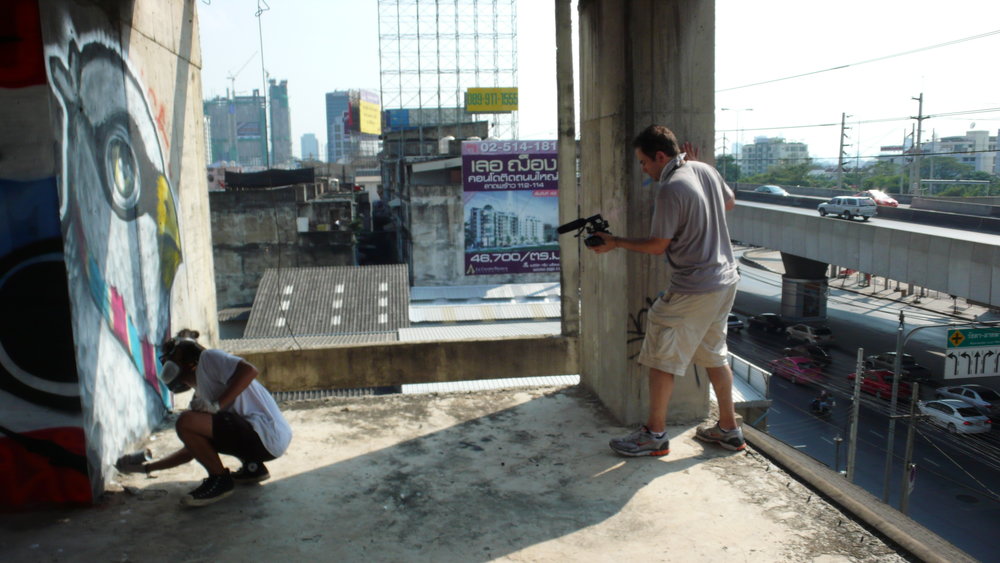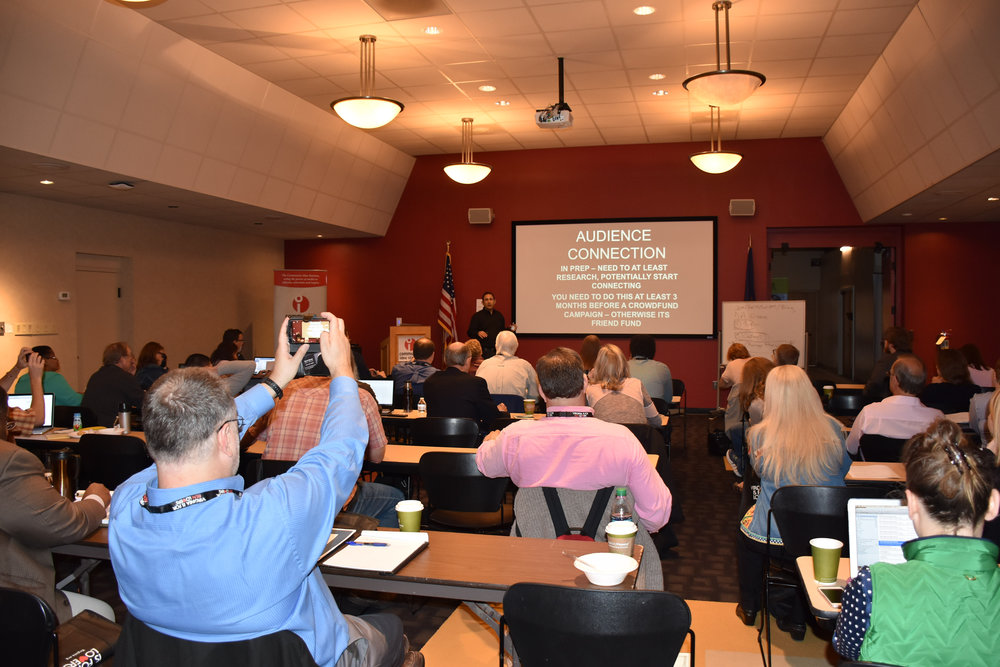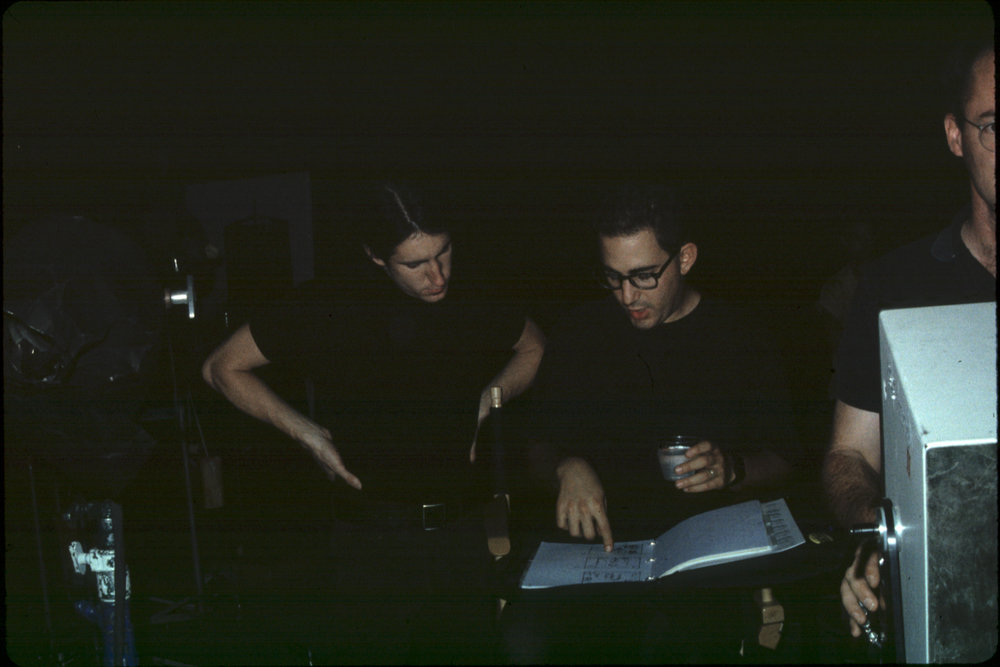

“Connecting the film to an audience is half the process.”
Finding your passion and focusing only on it can be a good thing — but so can taking what you learned while chasing your dream and teaching others about it. That’s what longtime filmmaker, Jon Reiss did following the release of his third feature film, 2007’s documentary, Bomb It — writing and releasing his first book, Think Outside the Box Office. The book was an effort to teach others what he wish he knew when making the film — namely the hybrid strategy for film distribution he used while releasing it.
Since then, Reiss has gone on to lead numerous filmmaking workshops, on top of teaching, writing books and producing more feature films. Not only that, but he is constantly coming up with new strategies for filmmakers and musicians alike on how to connect their work with audiences everywhere with his agency, Hybrid Cinema.
Curious to learn more about his immense and varied experience, we caught up with Reiss to discuss getting his start in film with music documentaries and videos (including Nine Inch Nails’ “Happiness in Slavery,”), what successful collaboration looks like, and how filmmakers might be able to engage audiences through music.
Marmoset: How did you get into filmmaking?
Jon Reiss: I got into filmmaking basically through working with a punk rock documentary collective, way back when in San Francisco. It was called Target Video and we shot a lot of California punk bands (Black Flag, Circle Jerks, Dead Kennedys, X), but we also did The Cramps, Throbbing Gristle, Iggy Pop etc. Then I kind of got more into industrial culture and worked with a group called Survival Research Laboratories, who were originally part of that whole underground scene in San Francisco. And then I went to film school, and out of film school I actually started doing music videos. I kind of hated music videos in the ‘80s, so I stayed away from them. But then Trent Reznor was looking for someone who hadn’t done music videos before and he liked my short films, and so that’s when I did the “Happiness in Slavery” music video. A lot of my early videos were banned from MTV. But I found it hard to make a living off of videos that are banned from MTV, so…I did some that weren’t banned and then got tired of the music video thing and wanted to make features, so I quit videos cold turkey and made a couple of features — Better Living Through Circuitry and Cleopatra’s Second Husband.
With Bomb It, I ended up handling the release on my own with a hybrid strategy, doing some of the distribution myself and doing some in collaboration with a few companies, and then I wrote a book called Think Outside the Box Office. Since then, I’m more working with filmmakers and helping them with their distribution and marketing. But we’re also starting to expand into musicians and helping them with their brands.
It seems like you do a lot — you have this experience as a filmmaker, you work in strategy, you’ve written books. What attracted you to working in all of these fields vs. just being like “Nope, I’m only going to make film”?

It is interesting because I wrote the book to help filmmakers, hoping they could use the book as a guide and do what I did. I wrote it as the book I wish I had when I was distributing Bomb It. But then it seemed like more and more people needed help beyond the book, so I started doing workshops and realized I enjoyed teaching and working one on one with filmmakers helping them figure out how to get their films into the world and find an audience. I do want to get back in filmmaking — I just haven’t found the right project yet. We’ll see what happens.
What role do you feel music has in a film?
The role music has is primarily helping support the emotion of the story being told – wether fiction or non-fiction. It can also be for pacing and also to help indicate mood and tone. I think you have to be careful with how it’s used — it’s a very powerful tool and so it needs to be taken very seriously and handled with great care.
I recently worked with a film where I thought that they had wall-to-wall music and I said “Look, try dropping out 20 percent of the music and see how the film feels.” It was too much. I think it can change the feeling of a scene, or even of a whole film. It’s very, extraordinarily powerful, and so it needs to be taken very seriously and handled with great care.
The other role I think music can play that I teach to filmmakers in my workshops is that music can be a part of the expanded release and audience engagement of the film. For instance, there is a film that I wrote about called Ride the Divide. It takes place in the Rocky Mountains from Canada to Mexico, and the filmmakers found bands that lived in the areas where the film took place and where they intended to screen the film. When the film came out, those bands performed in support of the events with the film.
You can take that one step further where a band performs while the film is playing. For Bomb It 2, we created a dialog and effects mix (a D&E mix) so the music could be dropped out and a DJ could remix the music live to the film as it was playing.
You mentioned that you’ve directed many music videos, and got your start in the punk scene and filming that. Good or bad, what are five words you would use to describe making a music video?
Hopefully artistic. Creative collaboration. And, you know, hopefully fun. That’s six words.
What does community and collaboration mean to you? How do you know when it’s successful?
I think you know collaboration is successful when you’re feeding off the other person. They have ideas and you riff on that and say “What about this?” and they say “What about this?” and it progresses in a really positive way. So the end result is greater than the sum of the parts.
When I did the video for Trent [Reznor], “Happiness in Slavery,” he said, “I want something that has consensual S&M and gears grinding flesh.” I came up with some ideas and he was like “Oh, this is not really what I’m looking for, I’m looking for something kind of like this.” So then I went off and wrote something and he liked it and just kind of said, “Go ahead.” We showed him edits, he gave great notes. We even did some additional shooting based on those notes which really helped the piece. I think it worked out really well. It was probably the first and best creative collaboration I had in music videos.

If you had to pick the best piece of advice for a filmmaker who’s just starting out, what would you say?
Think entrepreneurially. There are so many different kinds of work available today. Be expansive about the what you consider is filmmaking. Go out and participate. Work begets work. Just get started doing something. It’s a pretty good time to be an up and coming filmmaker these days there’s so much demand for content and content creation.
The other thing to understand is that connecting the film to an audience is half the process. It’s similar to music in a sense that creating the work is half the process, but connecting with an audience is as important.

